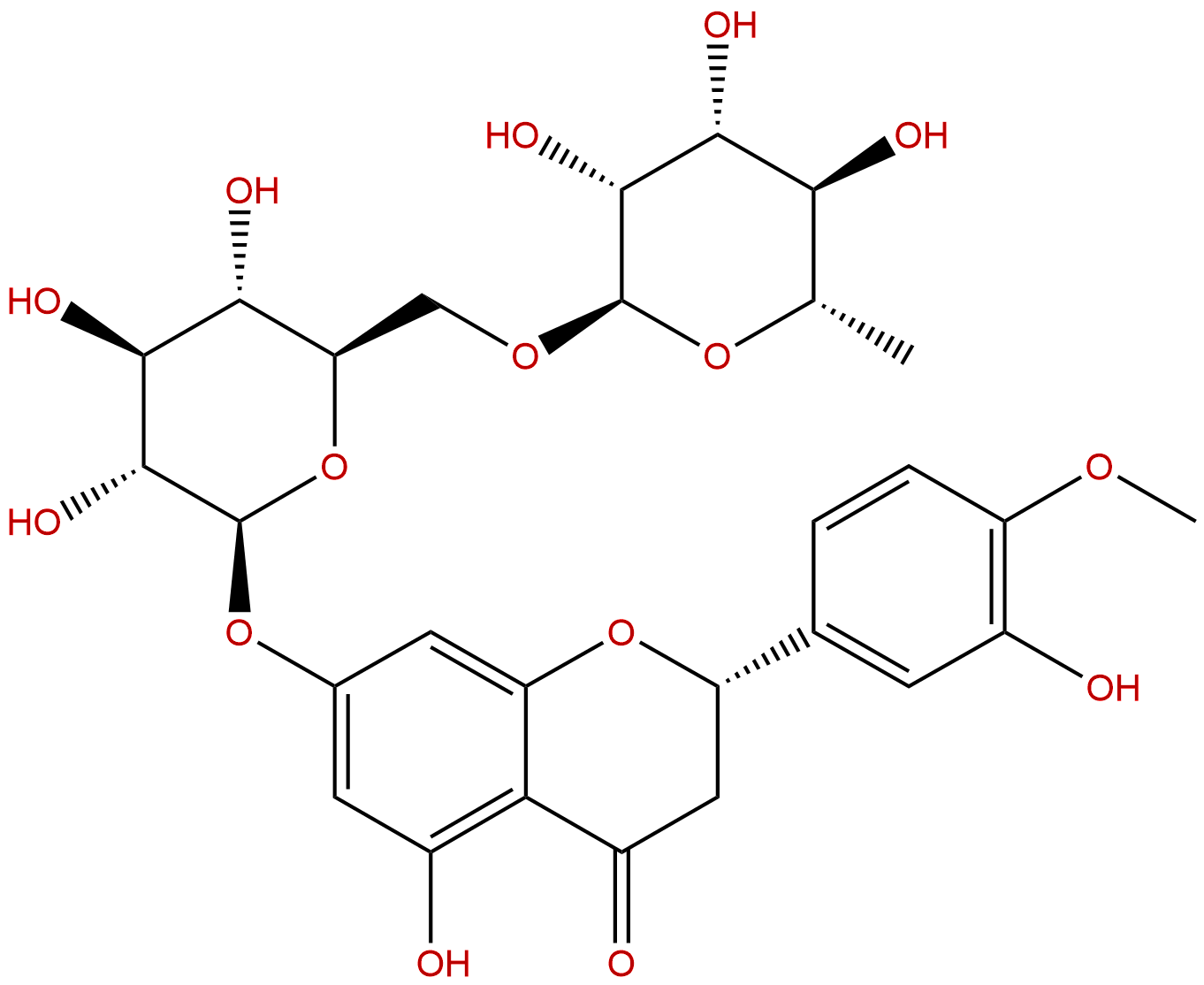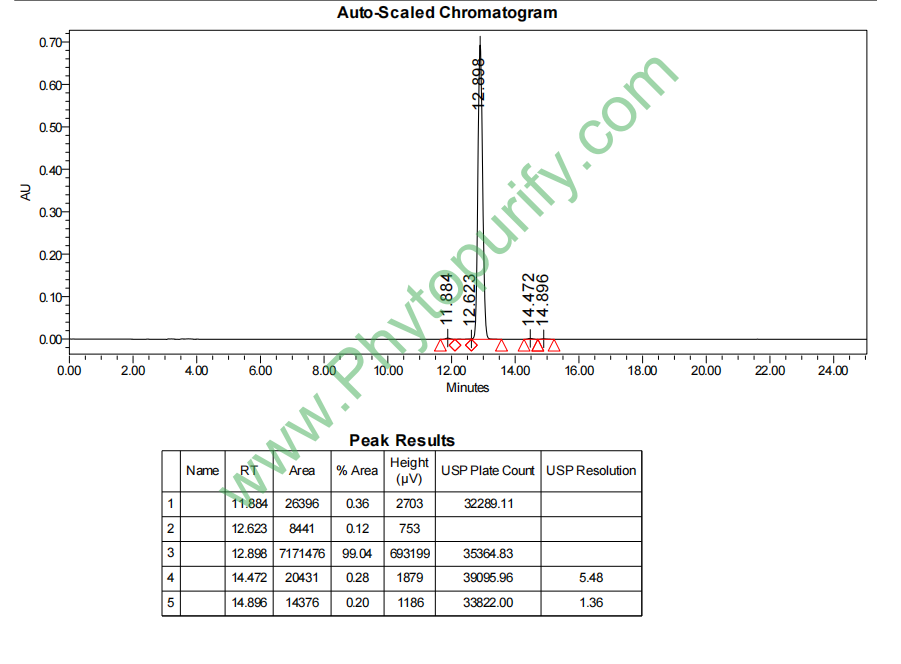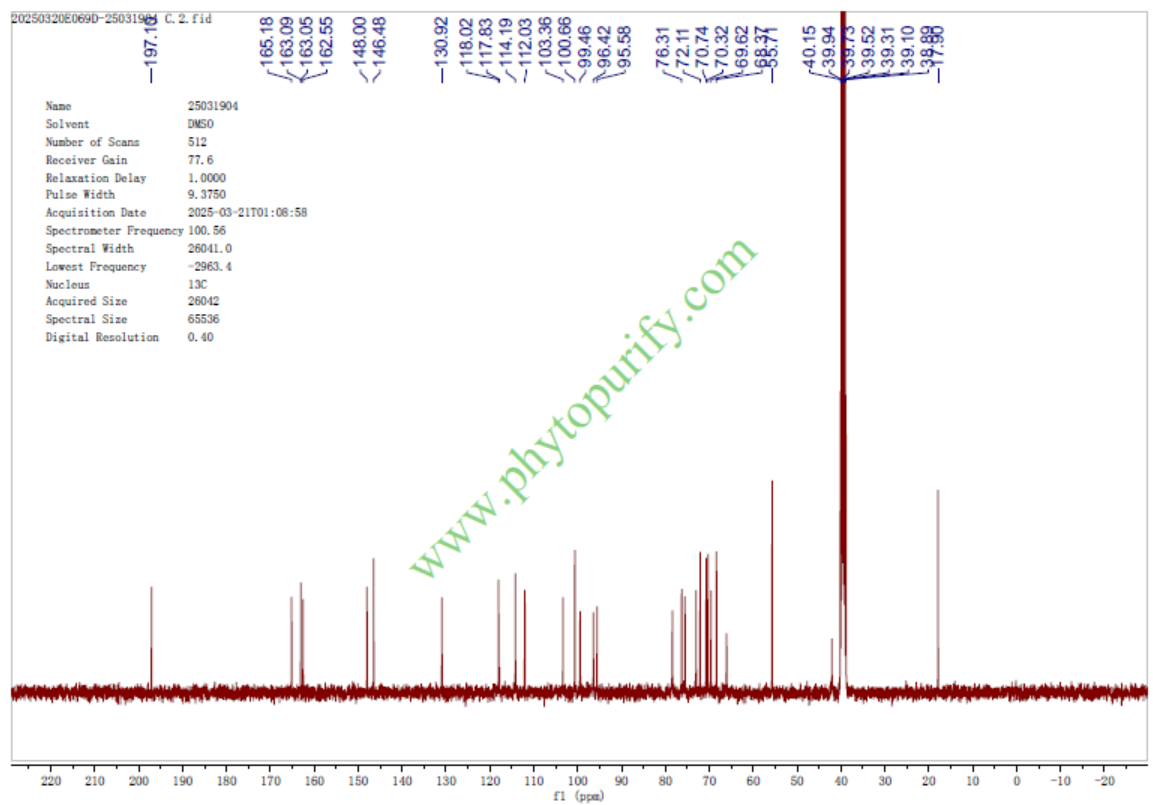
HesperidinCAS No.:520-26-3
|
||||||||||
 |
|
|
||||||||

| Catalogue No.: | BP0725 |
| Formula: | C28H34O15 |
| Mol Weight: | 610.565 |
Product name: Hesperidin
Synonym name:
Catalogue No.: BP0725
Cas No.: 520-26-3
Formula: C28H34O15
Mol Weight: 610.565
Botanical Source: Found in most citrus fruits and other members of the Rutaceae, also in Mentha longifolia, Vernonia, Anthurium, Xanthoxylum spp. and many others. First oranges in 1828
Physical Description: Powder
Type of Compound: Flavonoids
Purity: 95%~99%
Analysis Method: HPLC-DAD or/and HPLC-ELSD
Identification Method: Mass, NMR
Packing: Brown vial or HDPE plastic bottle
Storage: Store in a well closed container, protected from air and light. Put into refrigerate or freeze for long term storage.
Whenever possible, you should prepare and use solutions on the same day. However, if you need to make up stock solutions in advance, we recommend that you store the solution as aliquots in tightly sealed vials at -20℃. Generally, these will be useable for up to two weeks.
The product could be supplied from milligrams to grams, up to kilograms
Inquire for bulk scale.
Descriptions:
Hesperidin, a bioflavonoid, is an abundant and inexpensive by-product of Citrus cultivation, has antioxidant, anti-inflammatory, hypolipidemic, vasoprotective and anticarcinogenic and cholesterol lowering actions; can improves the health of capillaries by reducing the capillary permeability; can inhibit following enzymes: phospholipase A2, lipoxygenase, HMG-CoA reductase and cyclo-oxygenase. [1]
Hesperidin supplementation and diosmin individually or in combination, is effective in inhibiting the development of oesophageal cancer induced by MNAN, such inhibition might be related to suppression of increased cell proliferation caused by MNAN in the oesophageal mucosa.[2]
Hesperidin contributes to the vascular protective effects of orange juice.[3]
Hesperidin has beneficial effects on bone and lipids, can inhibit bone loss in ovariectomized mice (OVX), an animal model of postmenopausal osteoporosis.[4]
Hesperidin improves biomarkers of oxidative stress and has a hypocholesterolemic effect in an animal model of diet-induced hypercholesterolemia.[5]
References:
[1] Garg A, Garg S, Zaneveld L J D, et al. Phytotherapy Research Ptr, 2001, 15(8):655-69.
[2] Tanaka T, Makita H, Kawabata K, et al.Carcinogenesis, 1997, 18(4):761-9.
[3] Morand C, Dubray C, Milenkovic D, et al. Am J Clin Nutr, 2011, 93(1):73-80.
[4] Chiba H, Uehara M, Wu J X, et al.J Nutr, 2003, 133(6):74-75.
[5] Mostafa M, El-Shafey, Mohamed F. Int J Pharma Sci. 2014, 4(3): 554-55.
[6] Han S, Mok S Y, Kim H M, et al. ??????, 2011, 38(2):295-299.
HPLC of Hesperidin

NMR of Hesperidin
